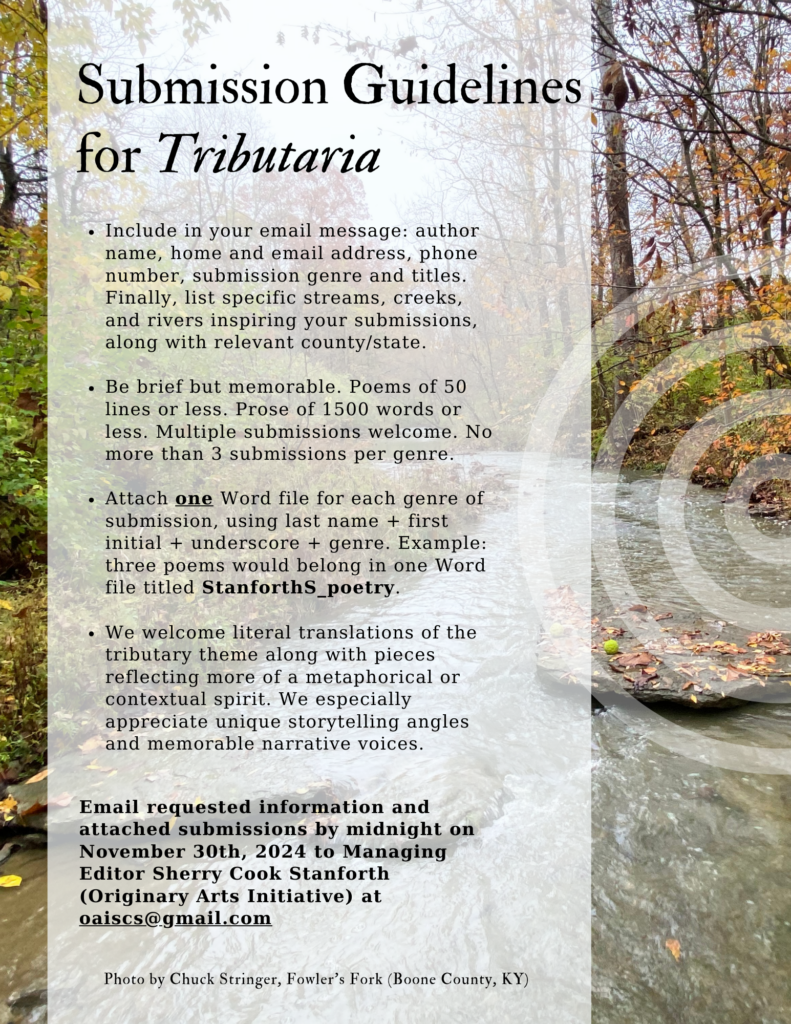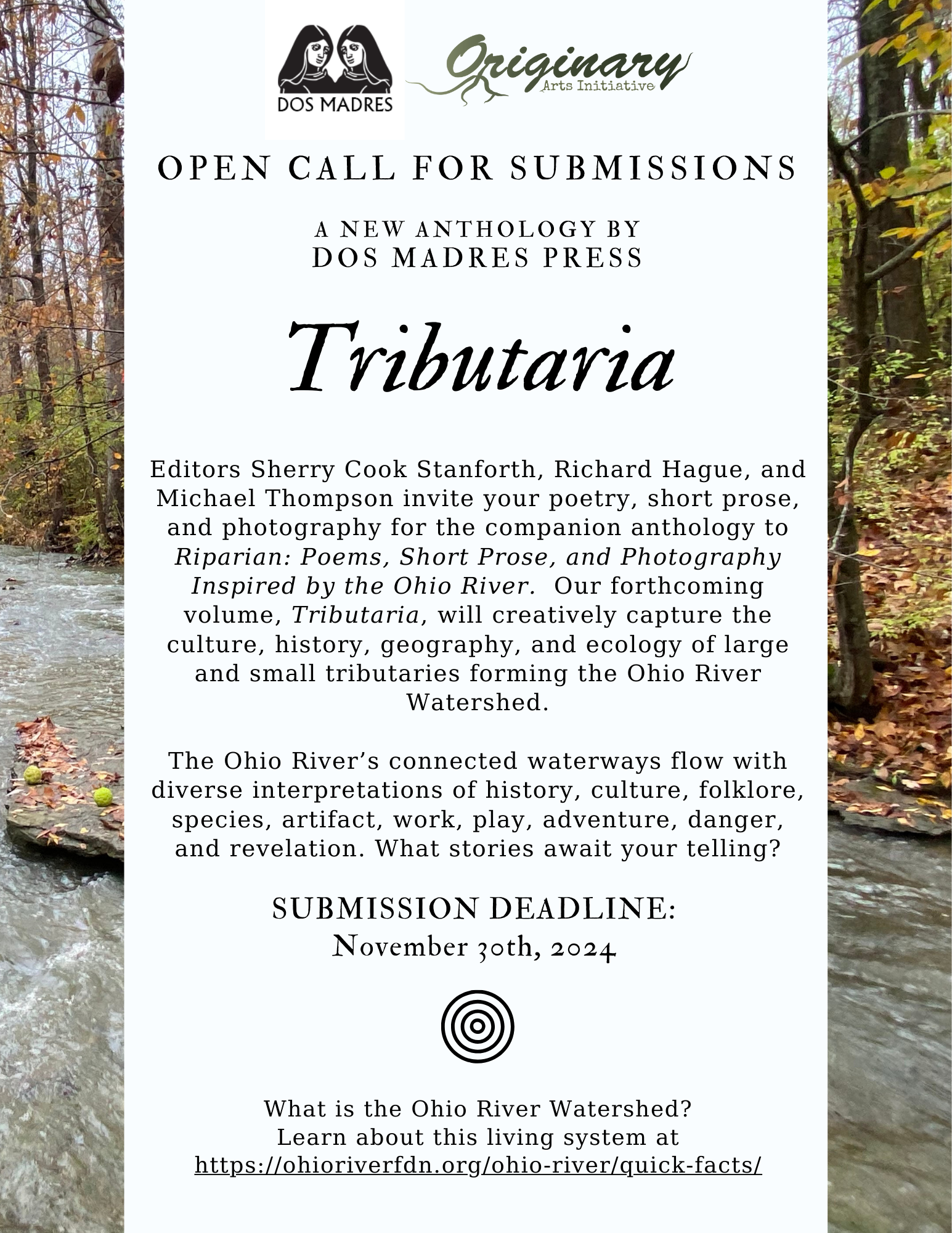By Mike Templeton
Still: The Journal recently published its final issue. After fifteen years of blazing trails in Appalachian writing and art, the people behind Still have decided it is time to move on to other things. The editors of Still explain in the final issue that “we feel it is time for
us to step away from editing and publishing and into other literary projects.” The Urban Appalachian Community Coalition will clearly miss the steady stream of amazing work that came from Still, and all of us will lament the loss of the opportunities Still provided for Appalachian writers. The loss of Still: The Journal will leave an empty space in the literary and artistic sphere of Appalachian life and culture, but this loss also presents a loss of a place for writers to submit and publish their work. To help fill that void, we can look to the Appalachian Writers’ Resources from the Appalachian Studies Association. There are other resources as well which I will get to below.
The Appalachian Writers’ Resources is a single site that contain links to journals, fellowships, and tool for writers working within the field of Appalachian culture. One of the difficulties one faces when working within a specialized field is that it might also narrow your field of possibilities for publication. Appalachian literature transcends the constraints of regionalism, but people often look to strictly defined resources for how to find writing and other information on a regional topic such as Appalachia. For this, the Appalachian Writers’ Resources is priceless.
There are links to publications such as The Red Branch Review which publishes literature and art of the Appalachian region. The Review is focused specifically on the diversity of Appalachian life and experience. In their statement on the topic of community, they explain: “The Review recognizes and celebrates the heterogeneity of Appalachia and its diaspora,” and works are selected as they represent these kinds of diverse perspectives. Resources such as The Red Branch Review provide opportunities for writers and artists who speak from and of Appalachia across the region and beyond. Other publications on the Appalachian Writers’ Resources are more specific. Voices of West Virginia is a website that collects the “best poets and storytellers” of the region, and while they are clearly focused on writers from the state, they are quite clear that they welcome writers from beyond West Virginia.
The Appalachian Writers’ Resources will also help you find sources beyond the journal or magazine formats. Here, for example, you will find a link to the Women of Appalachia Project. This project was founded with the design to empower Appalachian women by providing a space for their voices that would resist in every way the stereotypes and assumption that form the basis of discrimination towards Appalachian women. By encouraging women to find their voices, express those voices in ways which articulate their experiences, and by providing a medium for the publication of Appalachian women’s writing, the project has become a powerful force in contemporary Appalachian culture. While it is focused on Appalachian women, the Women of Appalachia Project now occupies a central place in Appalachian culture. The founder of the project is Ohio Poet Laureate Kari Gunter-Seymour who we profiled on this blog some time ago.
We also have Pine Mountain Sand & Gravel, which is the publication of the Southern Appalachian Writers Cooperative. Core member Sherry Cook Stanforth is the managing editor of PMS&G, and she tells us that the journal includes annual themed submission opportunities, showcasing some of the region’s most talented storytellers. Check the Facebook for calls for submissions. Those without Facebook can email [email protected]. Cook is also working on another installment of the series of publications that uses the Ohio River as the theme. Readers may recall Riparian from a few years ago. Sherry Stanforth Cook and co-editor Richard Hague are currently working with publisher Dos Madres Press to bring us Tributaria. This will include poetry, fiction, creative nonfiction, and photography inspired by the Ohio River. We will attach the call for submissions and you may reach out at [email protected].

Greater Cincinnati is blessed with a great many urban Appalachian writers, both. those whose focus and interests are specifically Appalachia, and those work may have nothing to do with Appalachia but who identify as Appalachian writers. Here are a few more general resources that I have found to be extremely helpful.
The Community of Literary Magazines and Presses (CLMP) is an outstanding resource for writers of all kinds. Their website is updated continually, and their social media can be an indispensable resource for writers. CLMP provides links to magazines, journals, and small presses that are open for submissions. These submission calls are frequently for specialized works such as regional writings, and CLMP is diligent in providing this kind of information in all their updates. CLMP is also a great site to find fellowships, grant opportunities, and even jobs with publishers. Their website and social media really are something like a wish-book for writers of all kinds.
Chill Subs provides a resource for publications combined with a site with tools to help you grow as a writer. Chill Subs provides regular updates of magazines and journals that are accepting submissions along with guidance on how to submit to these publications. They also have tools that can help you format your work for submission. Formatting your submission is a crucial step in the process, and it is one that can place your submission at the top of a list or get a great work dismissed out of hand because of improper formatting. Editors look at hundreds if not thousands of submissions, and an improperly formatted submission will get yours cut before anyone reads it. Chill Subs helps you get through these often mystifying steps and processes.
Even for experienced and published writers, the process of honing the craft never ends. There are always new ways of approaching our poetry and prose. And the process of publishing your work has as much to do with finding the right place as it does with the quality of the work. The best poetry and prose will not get published if it is with a journal or magazine that is not interested in the kinds of things you are doing. All of these issues become more pressing for Appalachian writers who are frequently working with ideas and topics that are quite specific. To find publications that are focused on Appalachia, Appalachian writers, and Appalachian culture is a blessing, and this is why the Appalachian Writers’ Resources from the Appalachian Studies Association is such an ideal resource. For people who write from the perspective of Appalachians, the opportunities to take their ideas beyond the scope of Appalachian studies is welcome. The resources above will hopefully land your work in the right place. With so many writers within the Urban Appalachian Community Coalition, it is aways refreshing to find new resources and tools to assist with writing and publishing.
Michael Templeton is a writer, and independent scholar. He is the author of The Chief of Birds: A Memoir published with Erratum Press and Impossible to Believe, forthcoming from Iff Books. He is also the author of Collected Apoems, forthcoming from LJMcD Communications and the awaiting of awaiting: a novella, with Nut Hole Publishing. Check out his profile in UACC’s Cultural Directory. He has published numerous articles and essays on contemporary culture and works of creative non-fiction as well as experimental works and poetry. He lives in West Milton, Ohio with his wife who is an artist.

